Dominant factor and incremental depth formula for self-aerated flow in open channel *
Rui-di Bai (白瑞迪), Fa-xing Zhang (张法星), Wei Wang (王韦), Shanjun LIU (刘善均)
State Key Laboratory of Hydraulics and Mountain River Engineering, Sichuan University, Chengdu 610065,China
Abstract: The presence of air in open channel flows will increase the bulk of the flow, and is of great importance in the design of spillway and chute sidewalls. Hydraulics in the developed region is investigated in this paper systematically by a series of model and prototype investigations. It is verified that the velocity in the aeration region is the dominant factor. For the flow with an identical velocity but a different flow depth, the air concentration distributions are nearly the same. From the theory based on the formation of drops on the surface by the turbulent liquid jets and the vortex deformation, a formula to calculate the incremental depth is obtained by best correlating the model and prototype investigations. The formula is reasonable with less mean error than those obtained by other methods, which could recommended for the use in engineering designs.
Key words: Aerated flow, aeration incremental depth, unaerated black water, aeration flow depth
Introduction
The self-aeration is a phenomenon found at a high velocity in open channel flows, due to the interaction between the turbulent flow and the free surface[1-4]. Under certain conditions, the air can be entrained into the open channel flow, and the liquid will be ejected from the flow at the same time.Ehrenberger is usually cited as the first scholar who suggested the self-aeration in the open channel flow,and pointed out that the self-aeration could be found only in the flows with the velocity higher than a critical value[5]. Based on these ideas, the critical conditions for the occurrence of the self-aeration and the mechanisms of the self-aeration can be defined.Keulegan analyzed the wave instability in open channel flows, and it was suggested in his work that the air might be entrained by breaking waves at the free surface, when the following flow conditions are satisfied: the Froude number Fr>1.5. Straub and Anderson obtained the air concentration by measurement, which indicated that the air concentration varied in a continuous fashion along the flow depth[6].Chanson and Wood developed models for predicting the air concentration in the self-aerated open channel flow[7-11].
The precise mechanism of the self-aeration remains unclear. It is believed that the air entrainment occurs when the turbulence level is high enough to overcome both the surface tension and the gravity[12-14]. Volkart indicated that the air was entrained by the water drops falling back into the water flow and Wu established formulae to calculate the mixture flow characteristics. Davies indicated that the turbulent velocity v′ (normal to the free surface) must be large enough to overcome the surface tension pressure of the entrained bubble and greater than the bubble rise velocity component for the bubble to be carried away[15-17].

Fig. 1 Sketch of the self-aeration in the open channel flow
The amount of the air present within the flow in spillways and steep chutes is an important design parameter, which has been of interest to hydraulic engineers[18-19]. The entrained air not only increases the bulk of the flow, which decides the sidewallsʼ height, but also may prevent or reduce the cavitation damage. Many formulae were proposed for calculating the self-aerated flow depth in the open channel flows. Ehrenbergerʼs, Hallʼs and Wangʼs formulae were based on the prototype data. De Lapp suggested that the water discharge per unit width played an important role for the self-aerated flow depth. Wangʼs formula was obtained by analyzing the prototype data provided by Rao, Straub and others. Steven and Wilhelms indicated that the mean concentration was related to the chute bottom gradient.
Most formulae were established with the following parameters: the Froude number Fr(Fr=U/( gh)0.5), the width b, the unaerated water depth h, the section average velocity U, the hydraulic radius R (R=bh/( b+2h)), the chute bottom gradient i, and the roughness coefficient n.
Based on the dominant factors for self-aerated flows in the developed region for spillways and chutes,a formula of the self- aerated flow depth is established in this paper.
1. Hydraulics model
The experiments are conducted in two rectangular chutes, one of 0.20 m wide, 24 m long, α=5.7°,8.5°, h0=0.20 m, 0.30 m, and U0=4.4-8.5m/s the other of 0.05 m wide, 12 m long, α=15.2°,h0=0.10 m , and the maximum velocity equal to 20 m/s. The sidewall and the bed are made of plexiglass. The flow is supplied by a constant head system and measured within ±1% with a rectangle sharp-crested weir. In Fig. 1, x is the streamwise coordinate along the chute bottom, y is the coordinate in the perpendicular direction, originating at the intake bottom.
The air concentration distribution is measured with a double probe including two platinum tips of 0.7 mm in diameter. The probe is excited by an electronics device designed with a response time less than 10 μs. The probe sensor is scanned at 100 kHz for 10 s. All measurements are conducted on the chute centerline. The air concentration measurement grid space is 2 m along the chute bottom and 3-5 mm perpendicular to the bottom in the flow depth.
2. Dominant factor for aeration
2.1 Analysis
In the self-aerated developed region, the air concentration distribution, the aerated developed depth d, and other hydraulics parameters keep unchanged along the chute.

Fig. 2 Sketch of self-aerated flows with different black water depths with identical V
A sketch of the aeration is shown in Fig. 2, with an identical velocity V (at aerated developed depth)and different flow depths (the unaerated water depth,and the total depth not including the air bubble).Increasing the flow depth with the identical V does not influence the velocity in the aeration developed depth,so the aerated developed depth and the air concentration distribution should be equivalent between the left and the right cases in Fig. 2. The unaerated black water has nearly nothing to do with the aeration,so the flow depth is not an essential factor, despite its effect on the velocity and the turbulent velocity.Furthermore, the velocity and the turbulent velocity are taken as the factors, that is to say, when the velocity and the turbulent velocity are known, it is not necessary to consider the influence factors on the velocity, such as the flow depth, the roughness, the chute slope, and the chute size, as the influence factors on the aeration. The Froude number is usually taken as the important factor on the aeration by many scholars, but since the flow depth has nearly nothing to do with the aeration, as mentioned above, the Froude number should not be taken as an influence factor on the aeration.
It is believed that the turbulent velocity v′normal to the free surface plays an important role in influencing the self-aeration. And the air entrainment occurs when v′ is large enough to overcome both the surface tension and the gravity, so the surface tension and the bubble size are important factors with respect to the aeration.
2.2 Experimental verification
In order to support such a claim that the unaerated black water depth and the flow depth have nearly nothing to do with the aeration, a series of model investigations are carried out. The sketch of the self-aeration in the open channel flow is shown in Fig.1, and the parameters are given in Chapter 2.
The typical air concentration distributions for the different flow depths and a same velocity are shown in Fig. 3. It can be seen that the aeration depth and the concentration distribution are nearly the same in the two cases. Besides, the same conclusion can be reached in all investigations.

Fig. 3 The typical air concentration distributions for different flow depths and the identical velocity
Downstream the inception point of the freesurface aeration with an enough distance, the aeration is fully developed, and the aeration depth and the distribution keep invariant in the different sections along the chute. In order to show the aeration region clearly, y90is defined as the location where C=0.9, and all perpendicular coordinates are substituted by it as y-y90, with the flow surface taking as the coordinate base. In the new coordinate system, the typical air concentration distributions for the two different flow depths with an identical velocity are shown in Fig. 4, where the two curves are nearly coincided. It can be concluded that the self-aerated depth and concentration are the same for cases with an identical velocity.
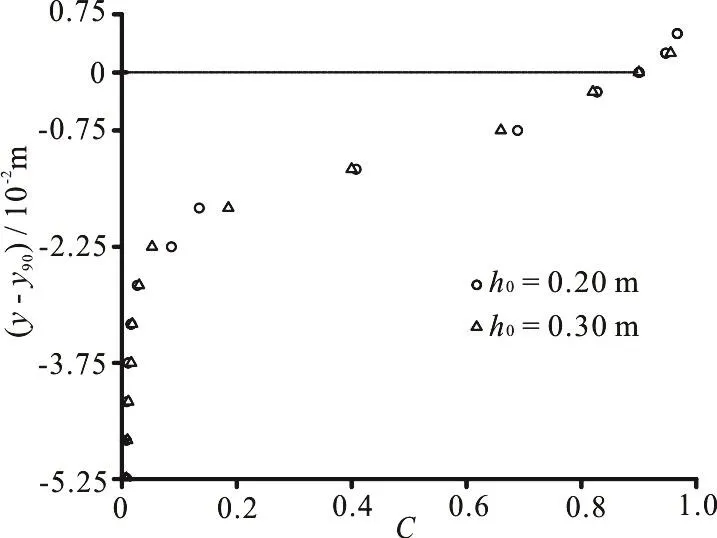
Fig. 4 Air concentration distributions in the new coordinate system
For the air developed in the chute bottom and deflected into the flow again, Wei et al.[20]measured the air concentration in the Aviemore dam chute with h0=0.30 m, 0.45 m with the distance measured over 40 m (the measuring-section to the intake). Cainʼs prototype investigation is shown in Fig. 5, where the depth is different and the velocity is nearly the same.It can be shown also that the two curves of the air concentration distribution are almost coincided and the slight deviation may be due to the difference of the velocity and the measuring error.

Fig. 5 Cainʼs data from the Aviemore dam
It can be concluded that the self-aerated depth and concentration are the same for an identical velocity in the model and prototype investigations, and the flow depth and unaerated depth have nearly nothing to do with the aeration, so the Froude number is not of importance to affect the aeration.
3. Incremental depth formula for the self-aerated flow
In this paper, the incremental depth Δh isdefined as
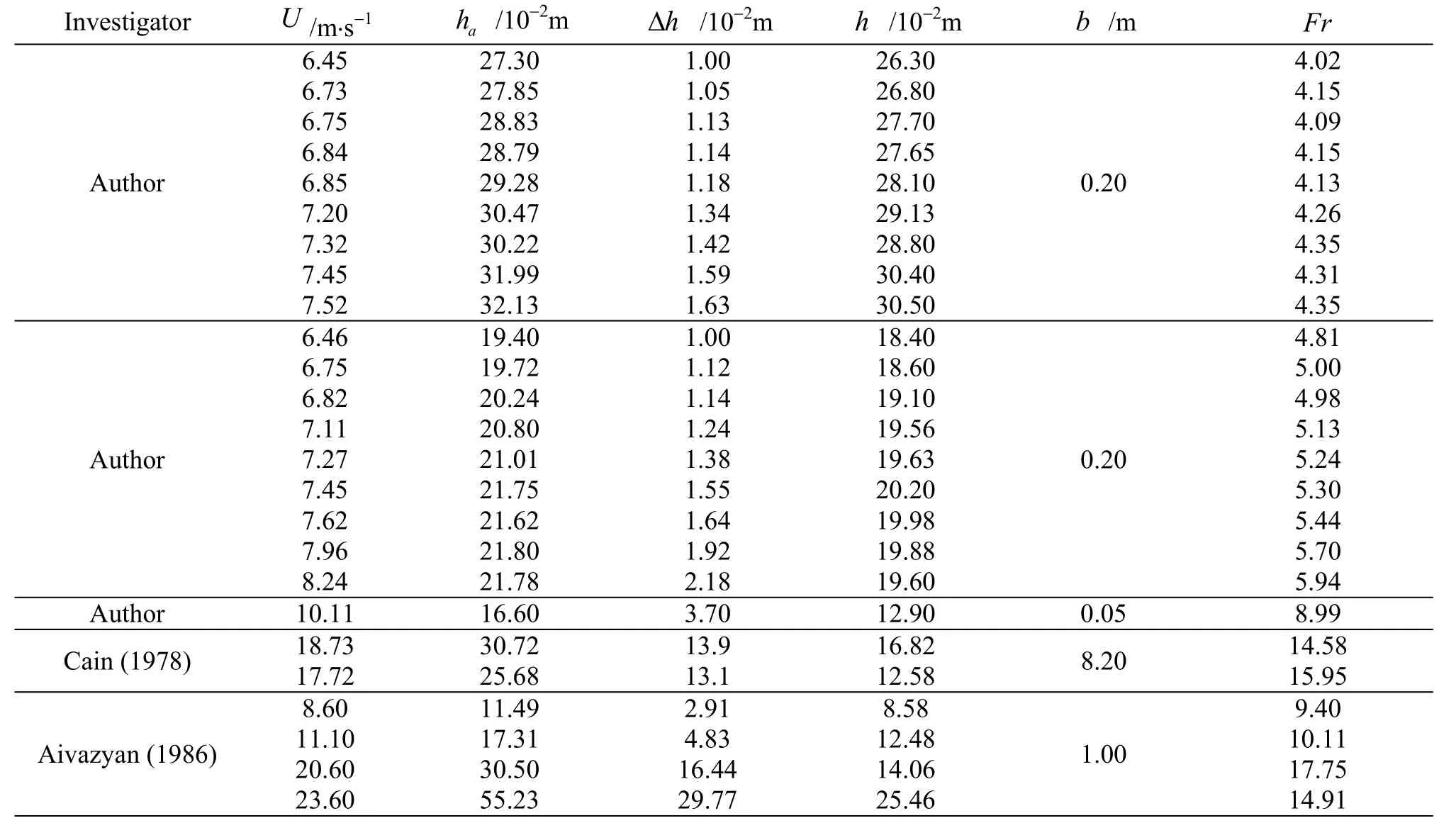
Table 1 Summary of the air-water flow characteristics in the self-aerated developed region

where C is the air concentration, y1, y90are the characteristic distances to the bottom when C=0.01,0.90, respectively.
The total depth haincludes the unaerated depth h and the incremental depth Δh, which is the depth when C=0.90, and it is expressed as

In the classical approach of Bai et al.[21-22]and Zhang[23], based on the formation of drops on the surface by turbulent liquid jets and the vortex deformation theory, the equation including the incremental depth Δh and other parameters can be written or rewritten as

where K1, K2are dimensionless coefficients, D is the bubble diameter and σ, the surface tension.
The velocity V in the aeration developed region can be considered as an invariable, so V can be expressed as kU, where k is a coefficient, and U is the average section velocity. The difference of the flow depth will result in a different velocity distribution, so the average section velocity for different flow depths will have a little effect for cases with an identical V, but it is very small. The turbulent intensityis directly proportional to V approximately, therefore, Eq. (3) can be rewritten as

The authorʼs experimental data and other investigatorsʼ prototype data in the self-aerated developed region are listed in Table 1. It must be noted that the velocity U in the measured section does not equal to the inlet velocity U0.
Based on the model and prototype values in Table 1, the relationship between Δh and U is best correlated by the following formula, which is in a good agreement with the model and prototype values,as shown in Fig. 6.

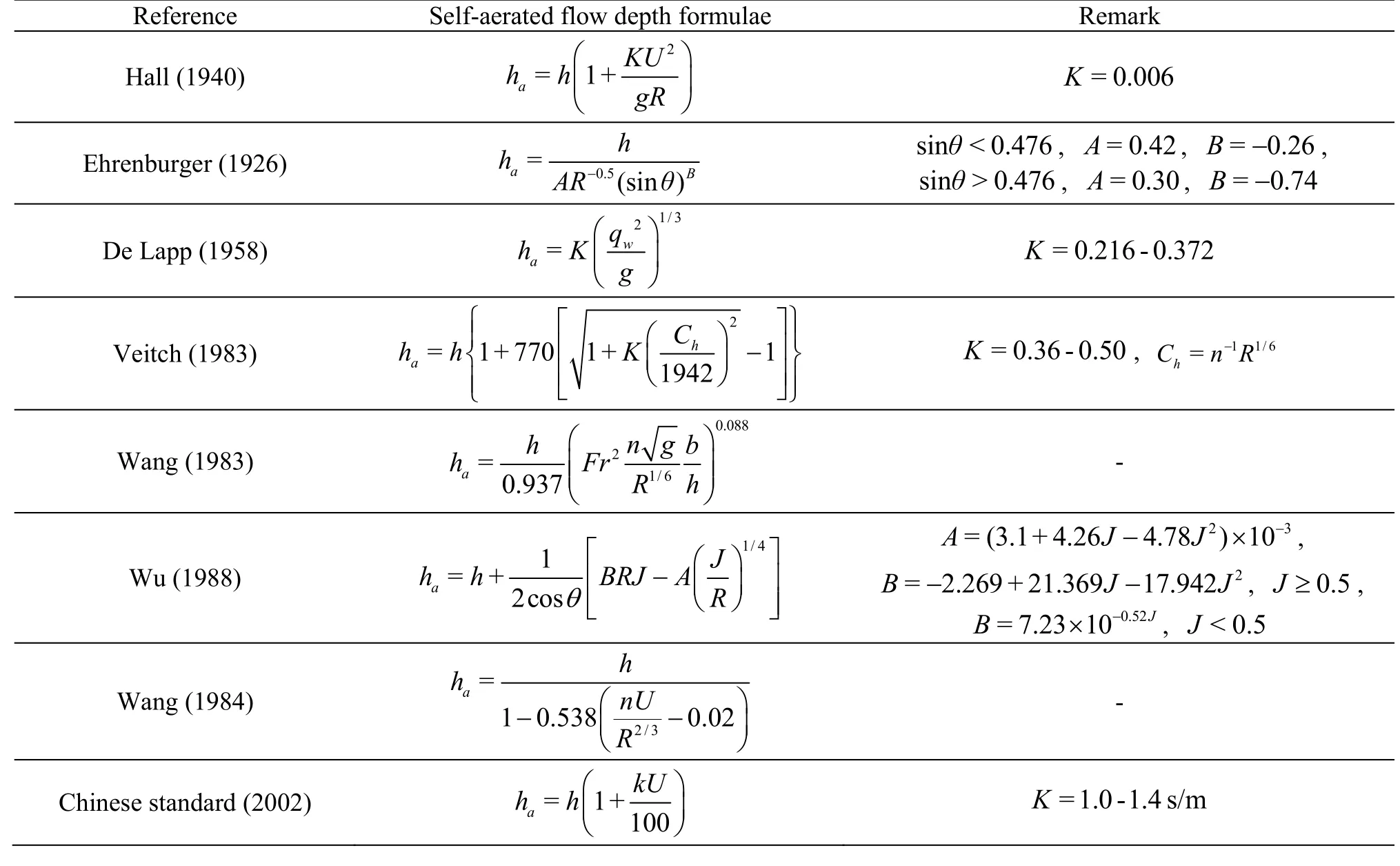
Table 2 Self-aerated flow depth formulae
where the term of k2′σ/ (ρgD) is approximately equal to 0.012 in this investigation, and the future experiments and studies will focus on the accurate effect of the surface tension and the bubble sizes on the self-aerated flow.
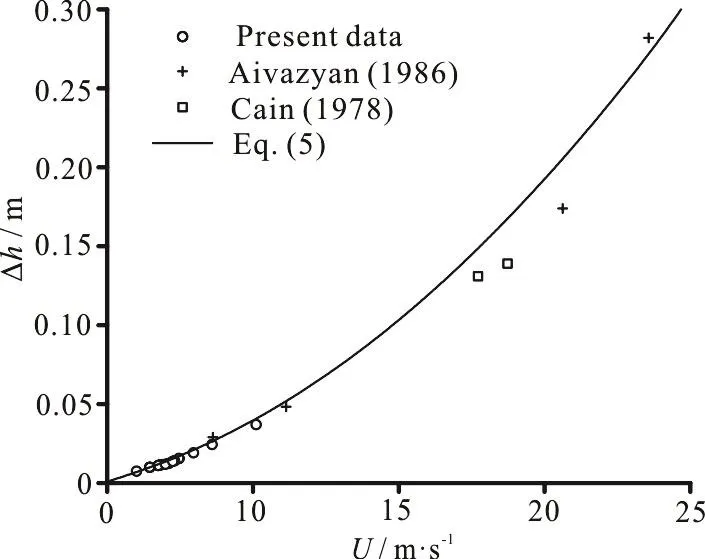
Fig. 6 Model and prototype values vs Eq. (5)
The eight typical formulae for calculating the self-aeration total flow depth are listed in Table 2.
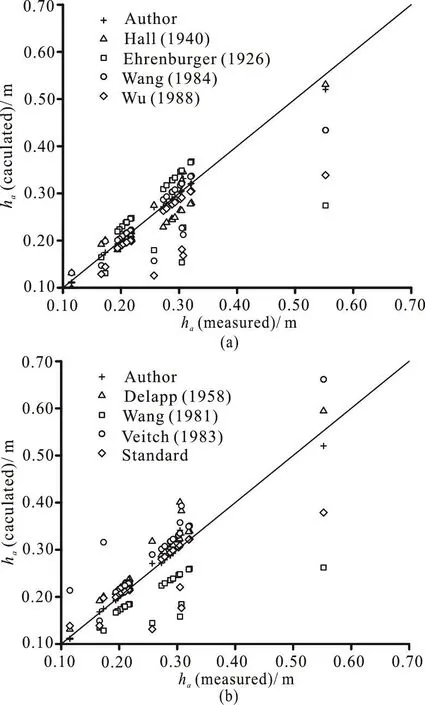
Fig. 7 Comparison among various methods based on model and prototype investigations
The comparisons between authorʼs formula and the other eight typical formulae for calculating the self-aeration flow depth (Table 1) are shown in Fig. 7,where the solid dots are the authorʼs computation,which shows that the authorʼs is in a better agreement with the model and prototype investigations. A careful analysis shows that the obvious errors of other formulae may be due to the fact that some irrelevant parameters are involved into the formulae and the experimental data are not carefully checked. For instance, the chute must be long enough to make the aeration be developed fully, the velocity must be the accurate value in the measuring section (in many cases, the uniform conditions are not satisfied), and the incremental depth must be accurately determined by the aeration data.
4. Conclusion
The air concentration in the self-aerated developed region is systematically measured in this paper.The focus is on the dominant factor of the self-aerated flow. By analyzing the air concentration distribution in the self-aerated developed region, it is found that the unaerated black water has nearly nothing to do with the aeration, so the flow depth is not an essential factor, and the Froude number should not be taken as the factor on the aeration. On the other hand, the velocity in the aeration region is the dominant factor.A formula to calculate the self-aerated flow depth is presented, which is in good agreement with the model and prototype data. Compared with the other methods,the present formula is much more reasonable with less mean error, which could be used for engineering designs.
- 水动力学研究与进展 B辑的其它文章
- Call For Papers The 3rd International Symposium of Cavitation and Multiphase Flow(ISCM 2019)
- Investigation of the hydrodynamic performance of crablike robot swimming leg *
- Determination of epsilon for Omega vortex identification method *
- Transient curvilinear-coordinate based fully nonlinear model for wave propagation and interactions with curved boundaries *
- Tracer advection in a pair of adjacent side-wall cavities, and in a rectangular channel containing two groynes in series *
- Numerical simulation of transient turbulent cavitating flows with special emphasis on shock wave dynamics considering the water/vapor compressibility *

